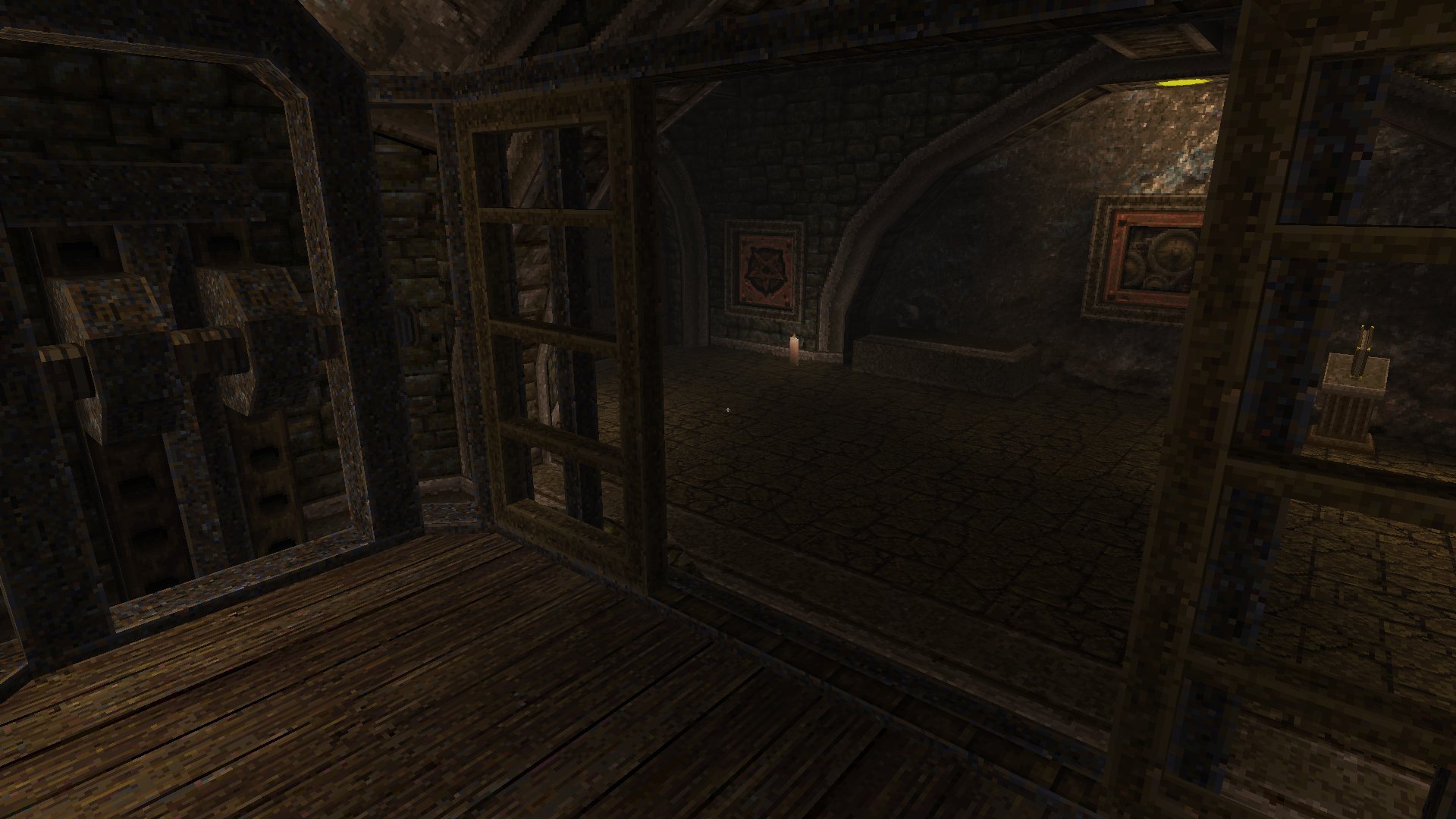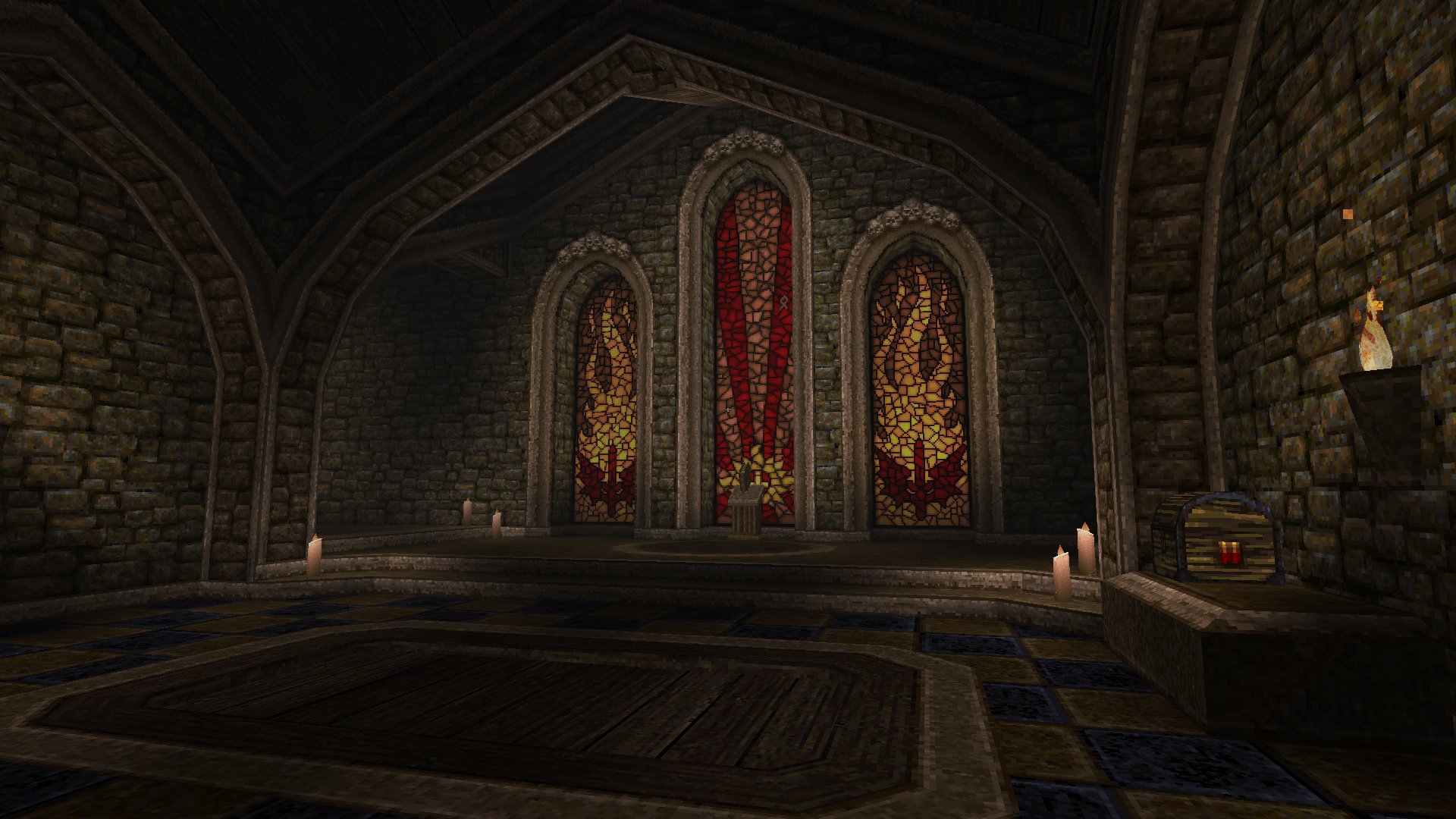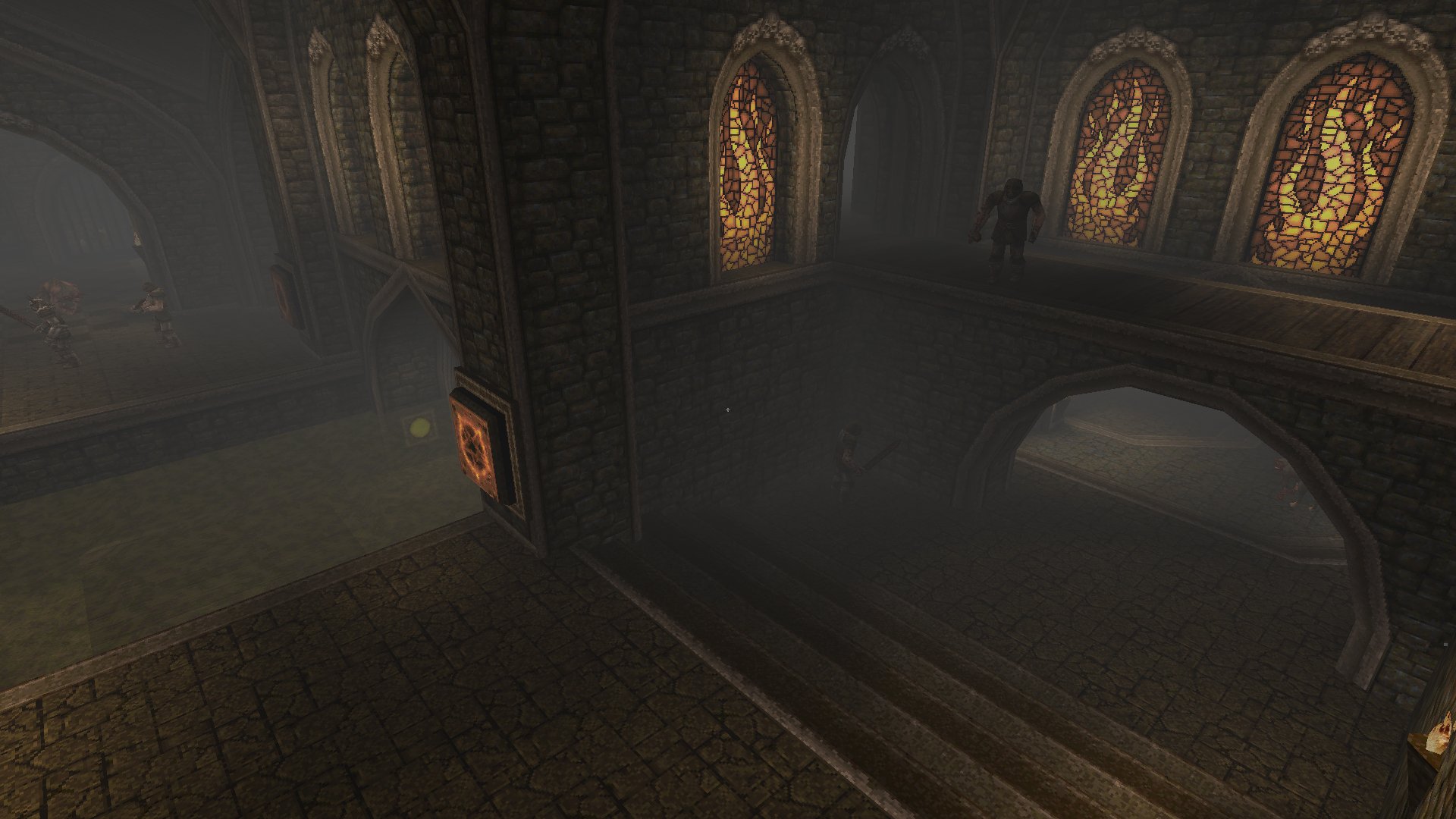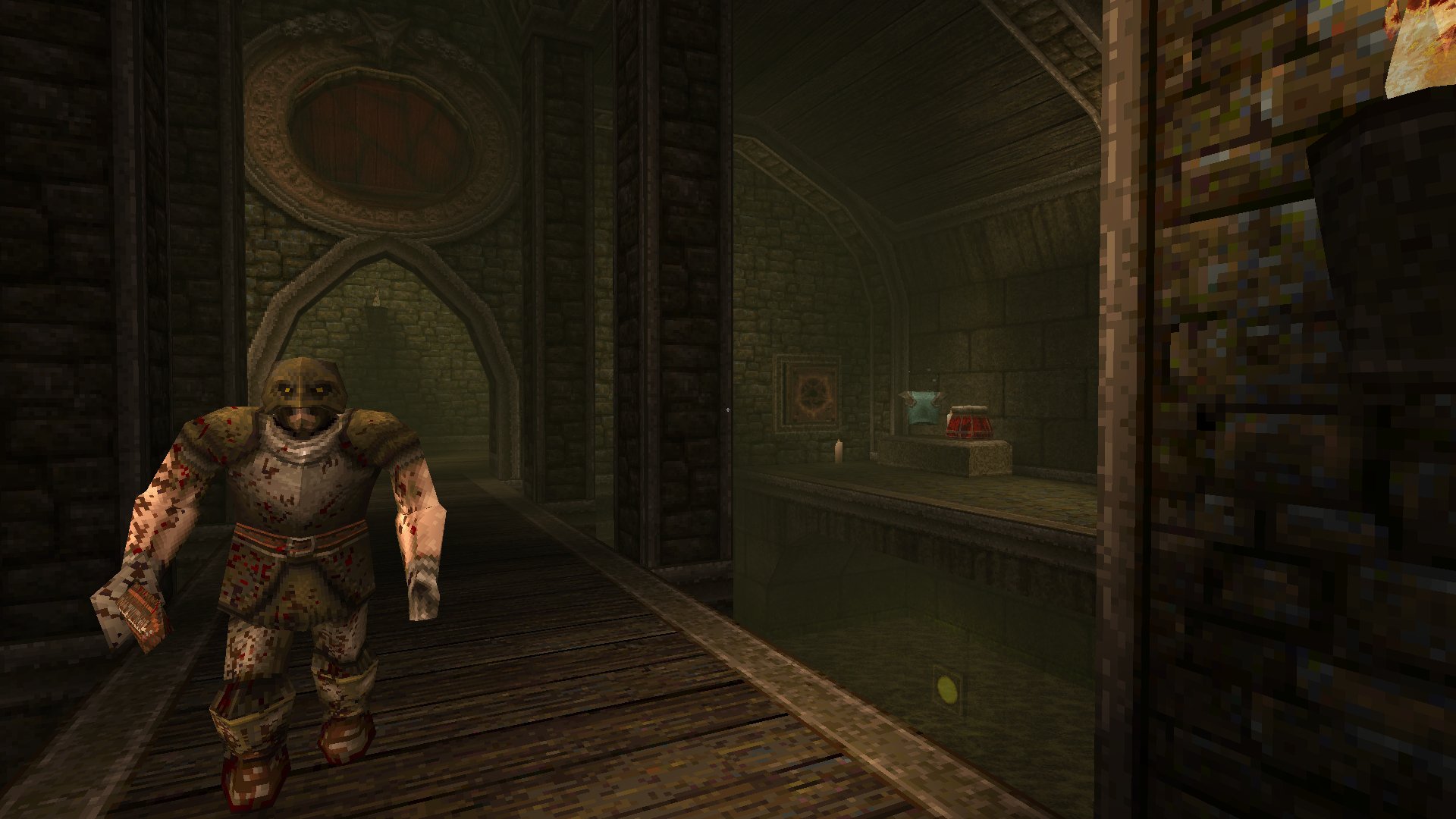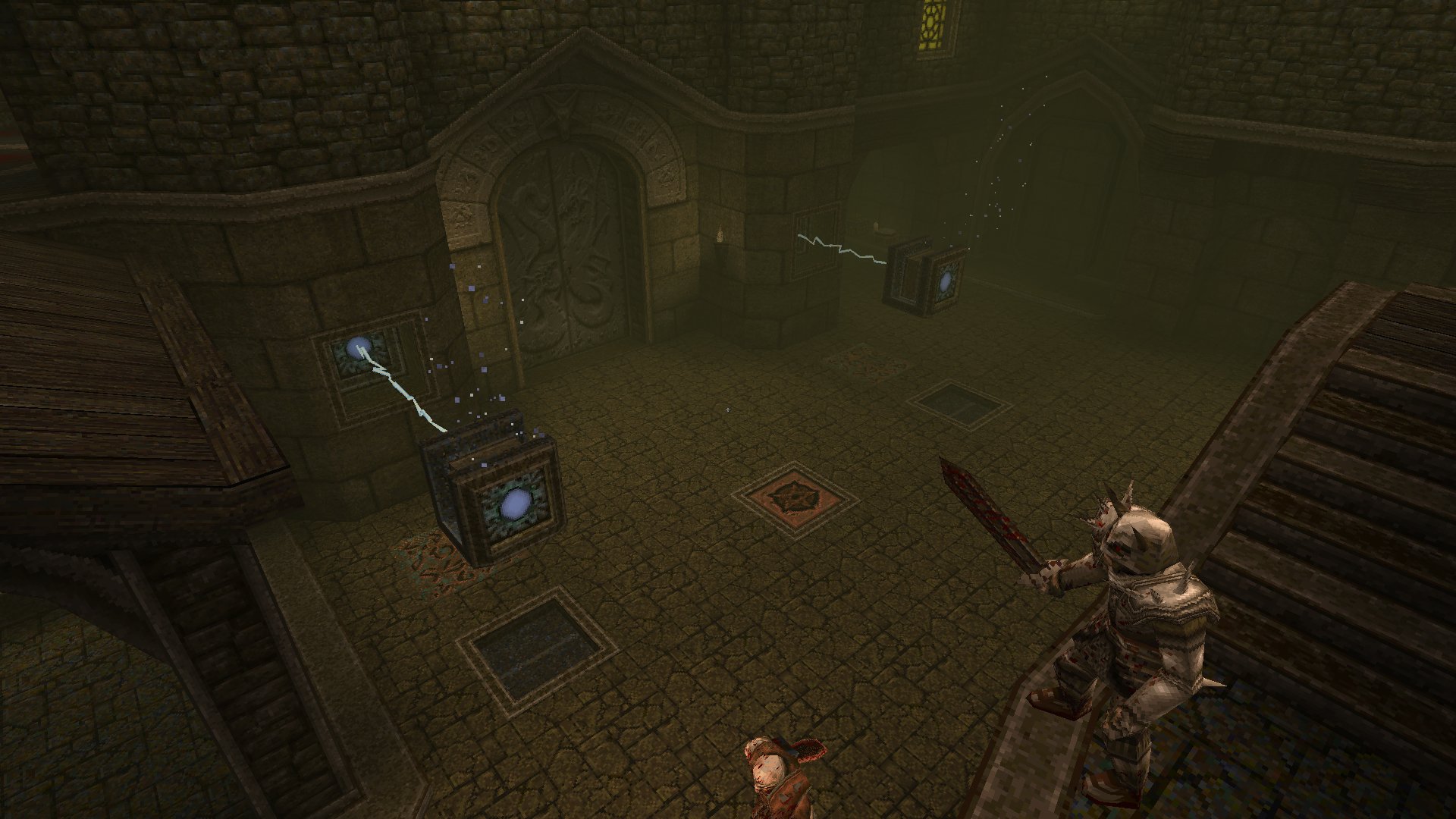In the Shadows (demo) by Sock
- Download: its_demo_v1.zip
This demo is a preview for one of the most eagerly anticipated Q1SP episodes/mods of recent years. In the Shadows is a medieval world consisting of impeccably designed medium/small maps, featuring modifications of basically every aspect of Quake: textures, sounds, monsters, gameplay features, models, you name it. While you can play the 3 maps (a start/training map and two others) in normal gameplay mode (which is a good option for people who may have trouble getting used to new gameplay), the main concept behind the mod is to create a stealth gameplay style similar to the Thief series of games, where the point is not to kill monsters (or in this case, mostly castle guards), but instead, to evade them. This gameplay style is something I don't think has been done in Quake before, and while the start map does include in-game training (way better than just a written instruction manual), thereare still things you need to figure out on your own. The stealth gameplay style requires a fair amount of patience and if you screw up it's pretty easy to die, but on the other hand this adds a tension that is lacking in lots of Quake maps.
The first map is called Temple of Swords, and presents the debut of Sock's "modified id medieval" map style. While there have been a wide variety of medieval texture sets for Quake, most of them have been converted from outside sources. In terms of modified/expanded texture sets, there have been modified/expanded versions of both id Base and netherworld Metal, but not really any expanded/modified medieval sets. Sock's texture set is probably best compared to Kell's Knave set: using recolouration and new combinations of elements in id's original sets such as skulls, arches, bricks, and etc, these textures create a design style that is new and highly coherent, yet still very Quakey. Temple of Swords' modified medieval textures are adorned by all sorts of carefully placed map objects, from a badass-looking statue of a corrupt warlord to candles and corpses. Throughout the map are books that give you information about gameplay and backstory at various times. One early section with a fiend management system is a good example to show how these environments are well thought-out: the maps all represent a historic setting and have functional sections relative to that setting. In this sense these maps are the oppotiste of Kell's maps, which are abstract medieval architecture without much in the way of logical purpose. My one reservation about this start map is there is one part where you need to find a button in order to advance, and for the life of me I couldn't find it.
The two "bonus maps" are remakes of Quake's e1m1: The Slipgate Complex (Sock's version is called Shadow Gate) and e1m2: Castle of the Damned (Sock's version is called Castle of Shadows). While e1m1 is obviously a base map, being remade as a medieval monastery is surprisingly effective here, with all of the map's features converted to make sense in this medieval world. The familiar secrets are all present, though the map's layout has been expanded some to make things more interconnected. The second map presents the idea that evil experiments are being done in this castle, which always seemed right to me when playing e1m2, perhaps because this is the first place in Quake you see the Ogre, who was partly inspired by Frankenstein's monster. So that's an atmospheric touch. Again, the layout and secrets remain the same but there are some expansions, and the architecture and texturing are both excellent and reflect well-considered ideas. My one reservation about these maps is the heavy fog: I feel like in maps on what is now a small scale (that is, id's original scale), heavy fog is unnecessary and it tends to obscure the map designs. I also thought the lighting should be darker, almost like the sort of lighting id used in some of its really dark maps like e1m6, to capture the sense of sneaking around in a spooky world. Overall, though, this is a unique and very well-executed piece of work, which also happens to resemble the first person RPG concept that Romero had for Quake in the first place.
Score: 18/20

 Easily install and launch Quake maps with the cross-platform
Easily install and launch Quake maps with the cross-platform 